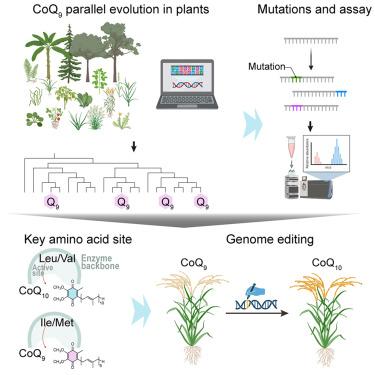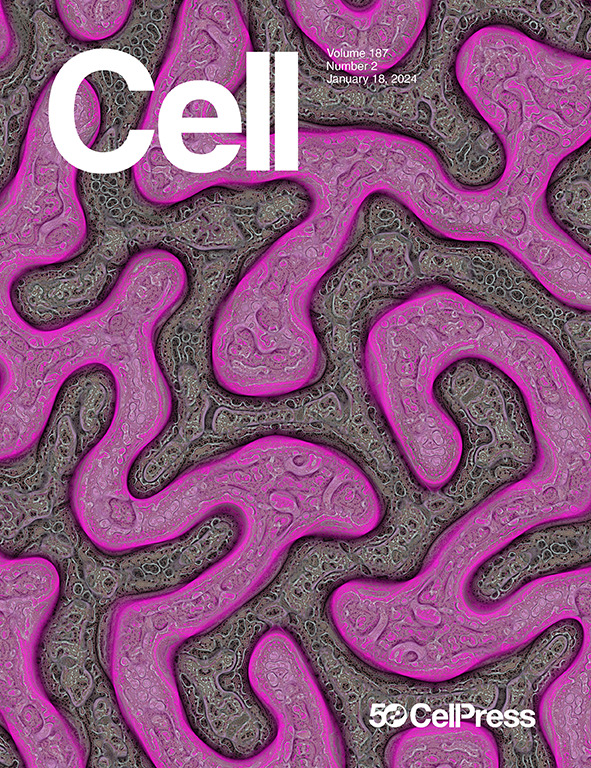Design of CoQ10 crops based on evolutionary history
IF 45.5
1区 生物学
Q1 BIOCHEMISTRY & MOLECULAR BIOLOGY
引用次数: 0
Abstract
Coenzyme Q (CoQ) is essential for energy production by mitochondrial respiration, and it is a supplement most often used to promote cardiovascular health. Humans make CoQ10, but cereals and some vegetable/fruit crops synthesize CoQ9 with a side chain of nine isoprene units. Engineering CoQ10 production in crops would benefit human health, but this is hindered by the fact that the specific residues of the enzyme Coq1 that control chain length are unknown. Based on an extensive investigation of the distribution of CoQ9 and CoQ10 in land plants and the associated Coq1 sequence variation, we identified key amino acid changes at the base of the Coq1 catalytic pocket that occurred independently in multiple angiosperm lineages and repeatedly drove CoQ9 formation. Guided by this knowledge, we used gene editing to modify the native Coq1 genes of rice and wheat to produce CoQ10, paving the way for developing additional dietary sources of CoQ10.

求助全文
约1分钟内获得全文
求助全文
来源期刊

Cell
生物-生化与分子生物学
CiteScore
110.00
自引率
0.80%
发文量
396
审稿时长
2 months
期刊介绍:
Cells is an international, peer-reviewed, open access journal that focuses on cell biology, molecular biology, and biophysics. It is affiliated with several societies, including the Spanish Society for Biochemistry and Molecular Biology (SEBBM), Nordic Autophagy Society (NAS), Spanish Society of Hematology and Hemotherapy (SEHH), and Society for Regenerative Medicine (Russian Federation) (RPO).
The journal publishes research findings of significant importance in various areas of experimental biology, such as cell biology, molecular biology, neuroscience, immunology, virology, microbiology, cancer, human genetics, systems biology, signaling, and disease mechanisms and therapeutics. The primary criterion for considering papers is whether the results contribute to significant conceptual advances or raise thought-provoking questions and hypotheses related to interesting and important biological inquiries.
In addition to primary research articles presented in four formats, Cells also features review and opinion articles in its "leading edge" section, discussing recent research advancements and topics of interest to its wide readership.
 求助内容:
求助内容: 应助结果提醒方式:
应助结果提醒方式:


